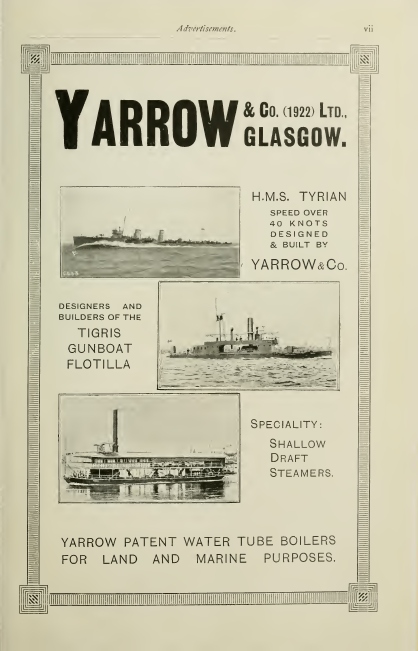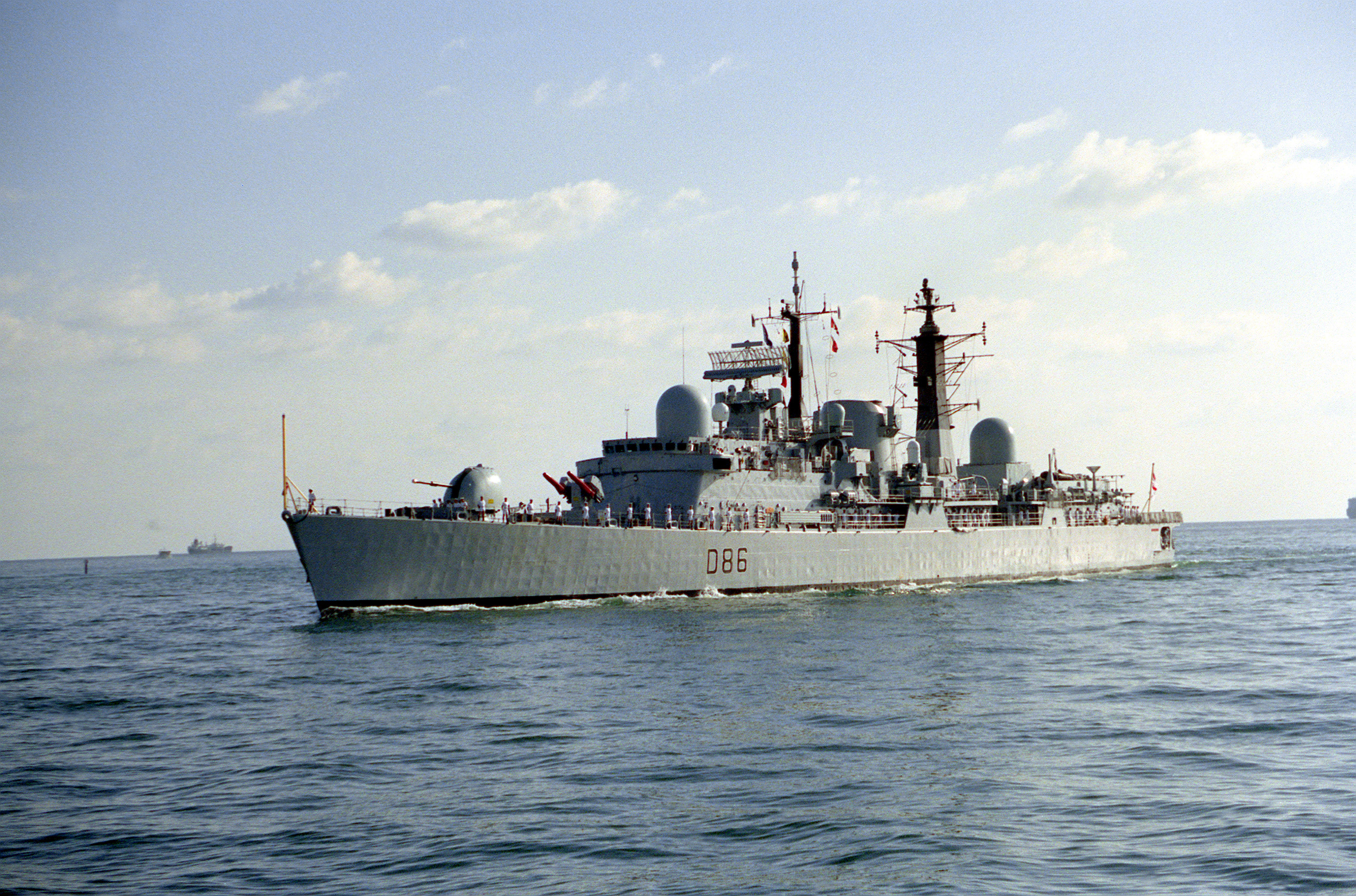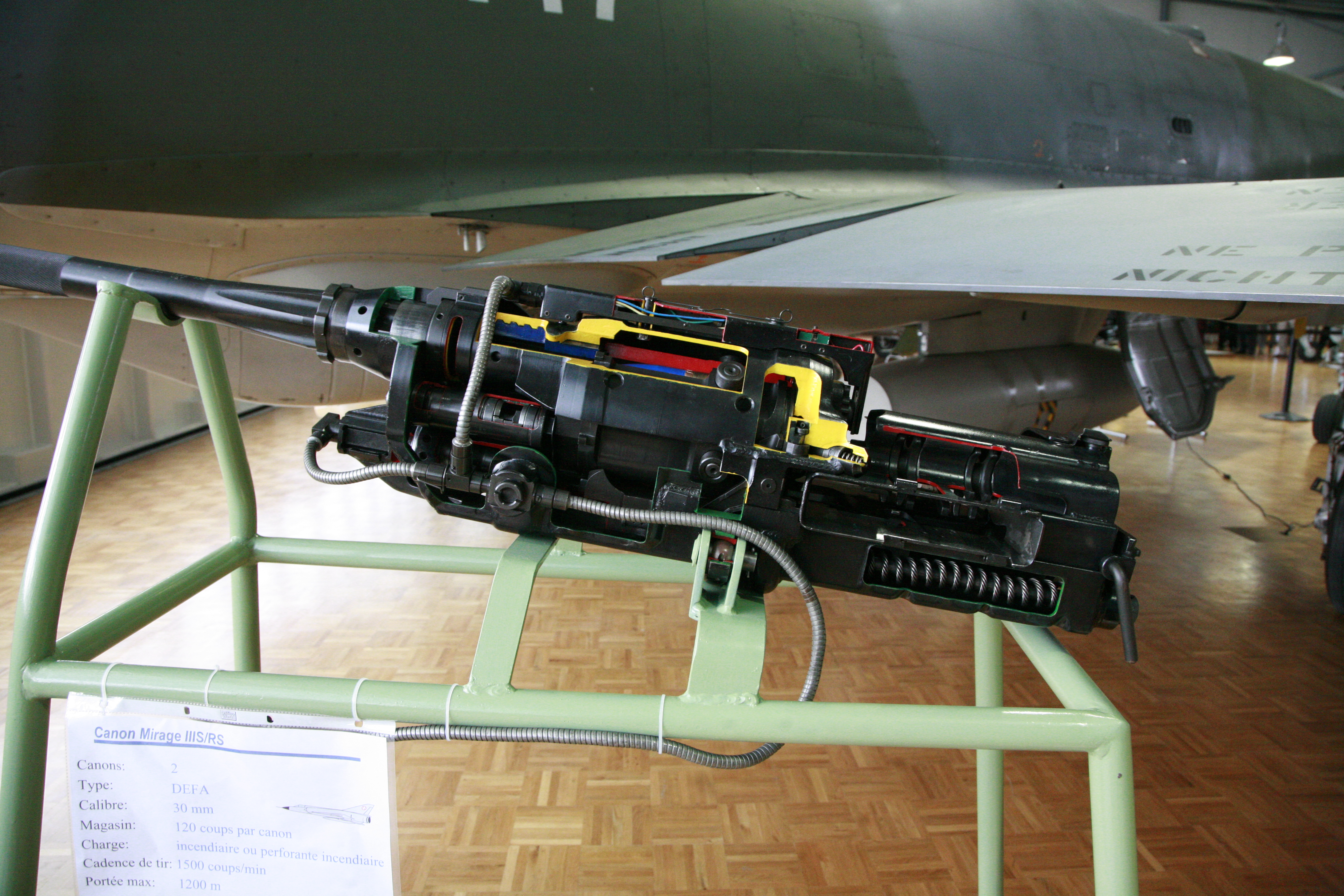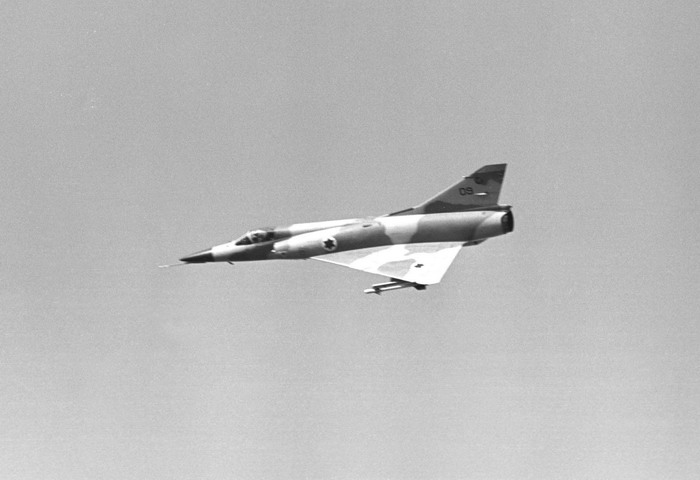|
HMS Arrow (F173)
HMS ''Arrow'' was a Type 21 frigate of the Royal Navy. ''Arrow'' was active during the Falklands War of 1982, where she provided naval gunfire support (NGFS) and rescued most of the surviving crew from HMS Sheffield. She was sold to Pakistan on 1 March 1994 and renamed PNS ''Khaibar''. Background Built by Yarrow Shipbuilders Ltd, Glasgow, Scotland, she was completed with Exocet launchers in 'B' position. During 1976-1977 her first captain was Commander Nick J Barker. Falklands War service During the 1982 Falklands War, ''Arrow'' was the first British ship to see action when she shelled Argentine positions around Port Stanley airfield on 1 May and the first to be hit by an Argentine Air Force aircraft, sustaining several cannon shell hits to her funnel uptake and other parts of the superstructure. She had one casualty from shell splinters. On 4 May she assisted in extinguishing the fires and evacuating the crew of the Type 42 destroyer HMS ''Sheffield'', which had been ... [...More Info...] [...Related Items...] OR: [Wikipedia] [Google] [Baidu] |
Yarrow Shipbuilders
Yarrow Shipbuilders Limited (YSL), often styled as simply Yarrows, was a major shipbuilding firm based in the Scotstoun district of Glasgow on the River Clyde. It is now part of BAE Systems Surface Ships, owned by BAE Systems, which has also operated the nearby Govan shipyard (formerly Fairfields) since 1999. History Origins in London The company was founded by Alfred Yarrow, later Sir Alfred Yarrow, 1st Baronet, in the year 1865 as Yarrow & Company, Limited. Originally it was based at Folly Wall, Poplar, then in 1898 as the company grew, Yarrow moved his shipyard to London Yard, Cubitt Town.History of London Yard by Angela Brown and Ron Coverson, 2001 Hundreds of steam launches, lake and river vessels, and eventually the |
Falklands War
The Falklands War ( es, link=no, Guerra de las Malvinas) was a ten-week undeclared war between Argentina and the United Kingdom in 1982 over two British dependent territories in the South Atlantic: the Falkland Islands and its territorial dependency, South Georgia and the South Sandwich Islands. The conflict began on 2 April, when Argentina invaded and occupied the Falkland Islands, followed by the invasion of South Georgia the next day. On 5 April, the British government dispatched a naval task force to engage the Argentine Navy and Air Force before making an amphibious assault on the islands. The conflict lasted 74 days and ended with an Argentine surrender on 14 June, returning the islands to British control. In total, 649 Argentine military personnel, 255 British military personnel, and three Falkland Islanders were killed during the hostilities. The conflict was a major episode in the protracted dispute over the territories' ... [...More Info...] [...Related Items...] OR: [Wikipedia] [Google] [Baidu] |
Captain (naval)
Captain is the name most often given in English-speaking navies to the rank corresponding to command of the largest ships. The rank is equal to the army rank of colonel and air force rank of group captain. Equivalent ranks worldwide include ship-of-the-line captain (e.g. France, Argentina, Spain), captain of sea and war (e.g. Brazil, Portugal), captain at sea (e.g. Germany, Netherlands) and " captain of the first rank" (Russia). The NATO rank code is OF-5, although the United States of America uses the code O-6 for the equivalent rank (as it does for all OF-5 ranks). Four of the uniformed services of the United States — the United States Navy, United States Coast Guard, United States Public Health Service Commissioned Corps, and National Oceanic and Atmospheric Administration Commissioned Officer Corps — use the rank. Etiquette Any naval officer who commands a ship is addressed by naval custom as "captain" while aboard in command, regardless of their actual rank ... [...More Info...] [...Related Items...] OR: [Wikipedia] [Google] [Baidu] |
Commander
Commander (commonly abbreviated as Cmdr.) is a common naval officer rank. Commander is also used as a rank or title in other formal organizations, including several police forces. In several countries this naval rank is termed frigate captain. Commander is also a generic term for an officer commanding any armed forces unit, for example "platoon commander", "brigade commander" and "squadron commander". In the police, terms such as "borough commander" and "incident commander" are used. Commander as a naval and air force rank Commander is a rank used in navies but is very rarely used as a rank in armies. The title, originally "master and commander", originated in the 18th century to describe naval officers who commanded ships of war too large to be commanded by a lieutenant but too small to warrant the assignment of a post-captain and (before about 1770) a sailing master; the commanding officer served as his own master. In practice, these were usually unrated sloops-of-war o ... [...More Info...] [...Related Items...] OR: [Wikipedia] [Google] [Baidu] |
Type 42 Destroyer
The Type 42 or ''Sheffield'' class, was a class of fourteen guided-missile destroyers that served in the Royal Navy.Marriott, Leo: ''Royal Navy Destroyers since 1945'', , Ian Allan Ltd, 1989 A further two ships of this class were built for and served with the Argentine Navy. The first ship of the class was ordered in 1968 and launched in 1971. Two of the class (''Sheffield'' and ''Coventry'') were sunk in action during the Falklands War of 1982. The Royal Navy used this class of destroyer for 38 years between 1975 and 2013. No ships of this class remain active in the Royal Navy and one remains in the Argentine Navy. The Royal Navy has replaced them with Type 45 destroyers. History The class was designed in the late 1960s to provide fleet area air defence. In total fourteen vessels were constructed in three batches. In addition to the Royal Navy ships, two more ships were built to the same specifications as the Batch 1 vessels for the Argentine Navy. ''Hércules'' was built i ... [...More Info...] [...Related Items...] OR: [Wikipedia] [Google] [Baidu] |
DEFA Cannon
The DEFA cannon (''Direction des Études et Fabrications d'Armement'') is a family of widely-used French-made aircraft revolver cannon firing 30 mm caliber NATO standard rounds. Design history The initial DEFA 551 was developed in the late 1940s. It is based on the German Mauser MG 213C, an experimental revolver cannon developed for the ''Luftwaffe''. The MG 213 never reached production, but inspired the DEFA, the very similar British ADEN cannon, and the smaller American M39 cannon. As the ''DEFA 552'' it entered production in 1954. In 1968 an upgraded version, Canon 550-F3, was developed, entering production in 1971 as the ''DEFA 553''. The new version provided a new feed system, nitro-chrome plated steel barrel, forged drum casing, and improved electrical reliability. Overview The DEFA 553 is a gas-operated five-chamber revolver cannon using pyrotechnic cocking and electrical ignition. It fires a range of 30 mm ammunition of various types, and is capable of continuous fi ... [...More Info...] [...Related Items...] OR: [Wikipedia] [Google] [Baidu] |
IAI Nesher
The Israel Aircraft Industries Nesher (Hebrew: נשר, 'griffon vulture', often mistranslated as 'eagle') was the Israeli version of the French Dassault Mirage 5 multirole fighter.Gupta 1997, p. 105. Having sustained aircraft losses during the Six-Day War of 1967 and the War of Attrition fought during the late 1960s, the Israeli Air Force (IAF) sought to procure an improved variant of the highly successful Dassault Mirage III fighter aircraft. While a partnership to produce such an aircraft, the Mirage 5, was formed between French manufacturer Dassault Aviation and Israeli aerospace company Israel Aircraft Industries (IAI), during January 1969, in response to the 1968 Israeli raid on Lebanon, the French government announced that it would be imposing an arms embargo on Israel. In response to the embargo, Israel decided to proceed with the venture, but to domestically manufacture the airframes instead. During 1969, IAI commenced manufacturing work on the type. According to offi ... [...More Info...] [...Related Items...] OR: [Wikipedia] [Google] [Baidu] |
Argentine Air Force
"Argentine Wings" , mascot = , anniversaries = 10 August (anniversary) 1 May (Baptism of fire during the Falklands War) , equipment = 139 aircraft , equipment_label = , battles = * Operation Independence * Operation Soberanía * Falkland Islands * Gulf War * Bosnia * Cyprus * Kosovo * Haiti , decorations = , battle_honours = , battle_honours_label = , flying_hours = , website = , commander1 = President Alberto Fernández , commander1_label = Commander-in-Chief , commander2 = Brigadier Xavier Isaac , commander2_label = Chief of Staff of the Air Force , notable_commanders = , identification_symbol = , identification_symbol_label = Roundel , identification_symbol_2 = , identification_symbol_2_label = Fin flash , aircraft_attack = A-4AR, Pampa , aircraft_bomber = , aircraft_electronic = , aircraft_fighter = A-4AR , aircraft_helicopter = Bell 412, Bell 212, Hughes 500D, SA315, Mil Mi-171 , aircraft_helicopter_attack = , aircra ... [...More Info...] [...Related Items...] OR: [Wikipedia] [Google] [Baidu] |
Nicholas Barker (Royal Navy Officer)
Nicholas John Barker (19 May 1933 – 7 April 1997) was an English senior Royal Navy officer and commanding officer of the survey ship during the Falklands War. Career Barker served in the Royal Navy between 1951 and 1988. Besides ''Endurance'', he held the following commands: , , , and . He was also commander of the Fishery Protection Squadron between 1984 and 1986. While permanently stationed in the South Atlantic, he warned the British Ministry of Defence of increased activity of the Argentine forces and the potential of an invasion of the Falkland Islands. Barker believed that Defence Secretary John Nott's 1981 Defence White Paper (in which Nott described plans to withdraw the ''Endurance'', the UK's only naval presence in the South Atlantic) had sent a signal to the Argentines that the UK was unwilling, and would soon be unable, to defend its territories and subjects in the Falklands. Despite Barker's messages, the United Kingdom took no action and Prime ... [...More Info...] [...Related Items...] OR: [Wikipedia] [Google] [Baidu] |
Gun Turret
A gun turret (or simply turret) is a mounting platform from which weapons can be fired that affords protection, visibility and ability to turn and aim. A modern gun turret is generally a rotatable weapon mount that houses the crew or mechanism of a projectile-firing weapon and at the same time lets the weapon be aimed and fired in some degree of azimuth and elevation (cone of fire). Description Rotating gun turrets protect the weapon and its crew as they rotate. When this meaning of the word "turret" started being used at the beginning of the 1860s, turrets were normally cylindrical. Barbettes were an alternative to turrets; with a barbette the protection was fixed, and the weapon and crew were on a rotating platform inside the barbette. In the 1890s, armoured hoods (also known as "gun houses") were added to barbettes; these rotated with the platform (hence the term "hooded barbette"). By the early 20th Century, these hoods were known as turrets. Modern warships have gu ... [...More Info...] [...Related Items...] OR: [Wikipedia] [Google] [Baidu] |
Glasgow
Glasgow ( ; sco, Glesca or ; gd, Glaschu ) is the most populous city in Scotland and the fourth-most populous city in the United Kingdom, as well as being the 27th largest city by population in Europe. In 2020, it had an estimated population of 635,640. Straddling the border between historic Lanarkshire and Renfrewshire, the city now forms the Glasgow City Council area, one of the 32 council areas of Scotland, and is governed by Glasgow City Council. It is situated on the River Clyde in the country's West Central Lowlands. Glasgow has the largest economy in Scotland and the third-highest GDP per capita of any city in the UK. Glasgow's major cultural institutions – the Burrell Collection, Kelvingrove Art Gallery and Museum, the Royal Conservatoire of Scotland, the Royal Scottish National Orchestra, Scottish Ballet and Scottish Opera – enjoy international reputations. The city was the European Capital of Culture in 1990 and is notable for its architectur ... [...More Info...] [...Related Items...] OR: [Wikipedia] [Google] [Baidu] |
Yarrow Shipbuilders Ltd
Yarrow Shipbuilders Limited (YSL), often styled as simply Yarrows, was a major shipbuilding firm based in the Scotstoun district of Glasgow on the River Clyde. It is now part of BAE Systems Surface Ships, owned by BAE Systems, which has also operated the nearby Govan shipyard (formerly Fairfields) since 1999. History Origins in London The company was founded by Alfred Yarrow, later Sir Alfred Yarrow, 1st Baronet, in the year 1865 as Yarrow & Company, Limited. Originally it was based at Folly Wall, Poplar, then in 1898 as the company grew, Yarrow moved his shipyard to London Yard, Cubitt Town.History of London Yard by Angela Brown and Ron Coverson, 2001 Hundreds of steam launches, lake and river vessels, and eventually the |







